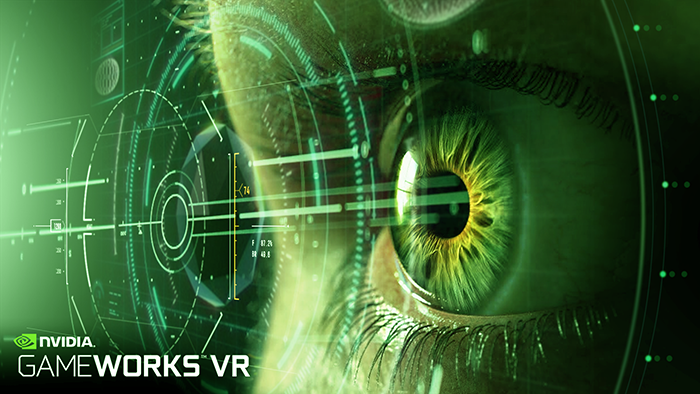nVidia, who has been making noises on the virtual reality front for a while now, has announced that they’re to launch ‘Gameworks VR’ to “help VR headset and game developers build incredible experiences on GeForce GPUs”.
nVidia has been talking up its commitment to virtual reality for some time now with initiatives such as VR Direct, a suite of features and optimisations designed to target the virtual realty enthusiast. Now, along with announcing a new ‘near’ top of the line GPU, the GTX 980ti, it’s to offer a new initiative to companies developing for VR with ‘Gameworks VR’.
Gameworks ‘vanilla’ is already pushed by nVidia to developers as a middleware suite, designed to help developers optimise their games for nVidia hardware, including bespoke featureset only supported on their hardware. Gameworks VR looks to be launching as an extension to that program, offering standardised tools, code samples and assistance for those struggling to optimise their VR games for Oculus’ recently release recommended specification.
VR Direct’s features will form an important part of Gameworks VR:
- NVIDIA Multi-Res Shading (MRS) — An innovative new rendering technique for VR. With NVIDIA MRS, each part of an image is rendered at a resolution that better matches the pixel density of the final displayed VR image. This technology uses the multi-projection architecture of the GeForce GTX 980 Ti GPU to render multiple viewports in a single pass. The result: substantial performance improvements for VR games.
- VR SLI — Provides increased performance for VR apps. Multiple GPUs can be assigned a specific eye to dramatically accelerate stereo rendering. With the GPU affinity application programming interface, VR SLI allows scaling for PCs with two or more GPUs.
- Context Priority — Enables control over GPU scheduling to support advanced VR features such as asynchronous time warp. This cuts latency and quickly adjusts images as gamers move their heads, without the need to re-render a new frame.
- Direct Mode — Delivers plug-and-play compatibility for VR headsets. With Direct Mode, the NVIDIA graphics driver recognizes the headset as a VR display rather than a standard desktop monitor, providing a more seamless user experience.
- Front Buffer Rendering — Lets the GPU to render directly to the front buffer to reduce latency.
According to nVidia, key technology stakeholders have had access to Gameworks VR and presumably early release drivers for some time now – CCP Games, Epic Games, HTC, Oculus, and Valve – to name but a few.
We’re looking forward to seeing drivers supporting these new features once they come to pass – not to mention what engine and game developers manage to do with access to this kind of VR specific middleware. We only hope this doesn’t lead to fragmentation in development circles.
For more information on the new SDK, head over to the new Gameworks VR page here.








